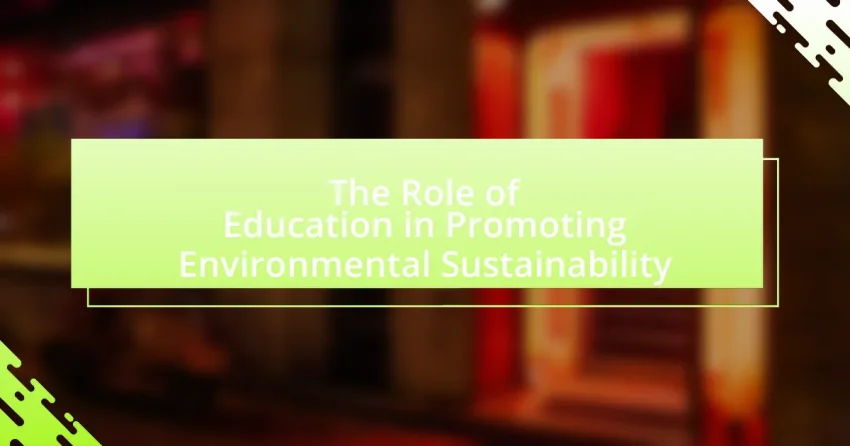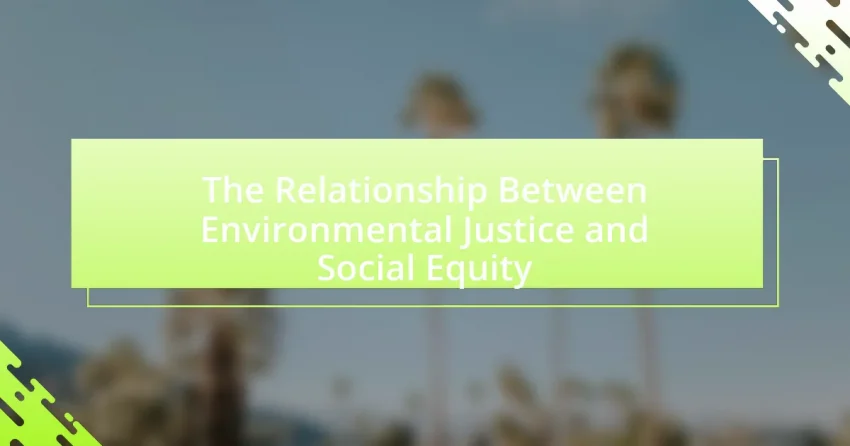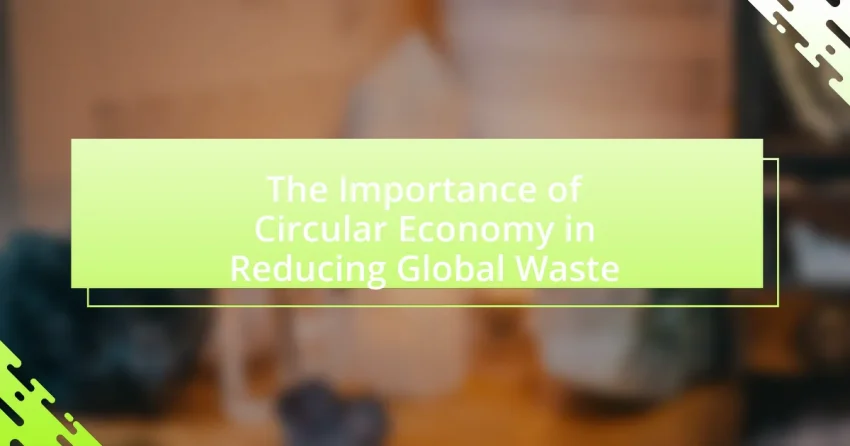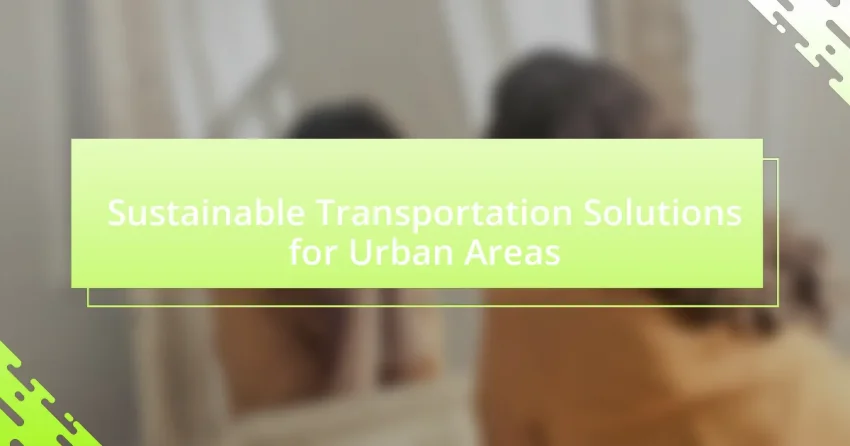The article focuses on the critical role of education in promoting environmental sustainability. It outlines how education equips individuals with the knowledge and skills necessary to understand and address environmental issues, leading to increased awareness and responsible behaviors. Key strategies for fostering environmental consciousness include experiential learning, interdisciplinary approaches, and community engagement. The article also…
The Intersection of Climate Change and Global Health Outcomes
The article examines the critical intersection of climate change and global health outcomes, highlighting the significant impacts of climate change on public health, including increased morbidity and mortality rates. It discusses how climate change contributes to the spread of infectious diseases, exacerbates respiratory and cardiovascular conditions, and leads to food and water insecurity, with the…
The Relationship Between Environmental Justice and Social Equity
The article examines the relationship between environmental justice and social equity, highlighting their interconnectedness in addressing the fair distribution of environmental benefits and burdens, particularly for marginalized communities. It outlines how environmental justice seeks to prevent disproportionate negative impacts from environmental hazards on disadvantaged groups, while social equity emphasizes fairness in access to resources and…
The Importance of Circular Economy in Reducing Global Waste
The Circular Economy is an economic model designed to minimize waste and maximize resource efficiency through practices such as reuse, recycling, and regeneration of materials. This approach contrasts with the traditional linear economy, which generates excessive waste through a ‘take-make-dispose’ model. Key principles of the Circular Economy include designing products for longevity, maintaining product value,…
Sustainable Transportation Solutions for Urban Areas
Sustainable transportation solutions for urban areas encompass a range of initiatives aimed at reducing environmental impact and enhancing urban livability. Key components include public transit systems, cycling infrastructure, pedestrian-friendly designs, and electric vehicle initiatives, all of which contribute to lower greenhouse gas emissions and improved air quality. The article explores how these solutions differ from…
The Effect of Air Quality on Life Expectancy in Different Countries
The article examines the critical relationship between air quality and life expectancy across different countries. It highlights how poor air quality, characterized by pollutants such as particulate matter and nitrogen dioxide, correlates with reduced life spans and increased mortality rates from respiratory and cardiovascular diseases. The article discusses specific pollutants, their health impacts, and the…
The Impact of Plastic Pollution on Coastal Communities
Plastic pollution poses a significant threat to coastal communities, adversely affecting marine ecosystems and local economies. The degradation of marine habitats leads to the decline of over 800 species, while economic losses from reduced tourism and fisheries could reach $13 billion annually. Key sources of this pollution include land-based activities, marine operations, and riverine transport,…
Sustainable Agriculture Practices for Improved Food Security Worldwide
Sustainable agriculture practices are essential methods aimed at meeting current food needs while ensuring environmental preservation for future generations. This article explores various sustainable practices, including crop rotation, agroforestry, organic farming, and integrated pest management, highlighting their contributions to food security and environmental health. Key principles such as maintaining soil health, conserving water, and promoting…
Renewable Energy Access and Its Influence on Quality of Life in Developing Countries
Renewable energy access is defined as the availability and utilization of naturally replenished energy sources, such as solar, wind, and hydroelectric power, particularly in developing countries. This access plays a crucial role in enhancing quality of life by improving education, healthcare, and economic opportunities, while also reducing reliance on harmful fossil fuels. Key indicators affected…
Green Building Standards and Their Influence on Urban Living Conditions
Green Building Standards are guidelines aimed at promoting environmentally responsible and resource-efficient building practices throughout a building’s life cycle. These standards, including LEED and BREEAM, significantly impact urban environments by enhancing energy efficiency, reducing waste, and improving indoor air quality, which collectively contribute to healthier living conditions. The article explores the principles of these standards,…









